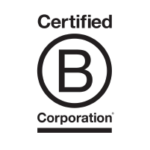In December 2010 the provision for bonus depreciation was amended and extended yet again by The Tax Relief, Unemployment Insurance Reauthorization, and Job Creation Act of 2010 (H.R. 4853). Under these amendments, eligible property placed in service after September 8, 2010 and before January 1, 2012 qualifies for 100% first-year bonus depreciation. For 2012, bonus depreciation is still available, but the allowable deduction reverts from 100% to 50% of the eligible basis.
To qualify for bonus depreciation, a project must satisfy these criteria:
- the property must have a recovery period of 20 years or less under normal federal tax depreciation rules;
- the original use of the property must commence with the taxpayer claiming the deduction;
- the property generally must have been acquired during the period from 2008 – 2012; and
- the property must have been placed in service during the period from 2008 – 2012.
If property meets these requirements, the owner is entitled to deduct a significant portion of the adjusted basis of the property during the tax year the property is first placed in service. As noted above, for property acquired and placed in service after September 8, 2010 and before January 1, 2012, the allowable first year deduction is 100% of the adjusted basis. For property placed in service from 2008 – 2012, for which the placed in service date does not fall within this window, the allowable first-year deduction is 50% of the adjusted basis. In the case of a 50% first year deduction, the remaining 50% of the adjusted basis of the property is depreciated over the ordinary MACRS depreciation schedule. The bonus depreciation rules do not override the depreciation limit applicable to projects qualifying for the federal business energy tax credit. Before calculating depreciation for such a project, including any bonus depreciation, the adjusted basis of the project must be reduced by one-half of the amount of the energy credit for which the project qualifies.
For more information on the federal MACRS, see IRS Publication 946, IRS Form 4562: Depreciation and Amortization, and Instructions for Form 4562. The IRS web site provides a search mechanism for forms and publications. Enter the relevant form, publication name or number, and click “GO” to receive the requested form or publication.
*Note that the definitions of eligible technologies included in this entry are somewhat simplified versions of those contained in tax code, which often contain additional caveats, restrictions, and modifications. Those interested in this incentive should review the relevant sections of the code in detail prior to making business decisions.
source: www.dsireusa.org













